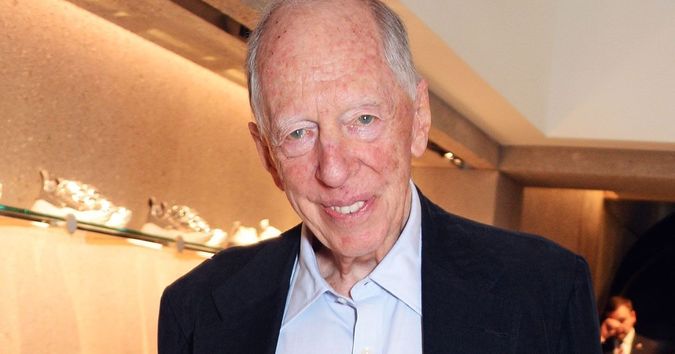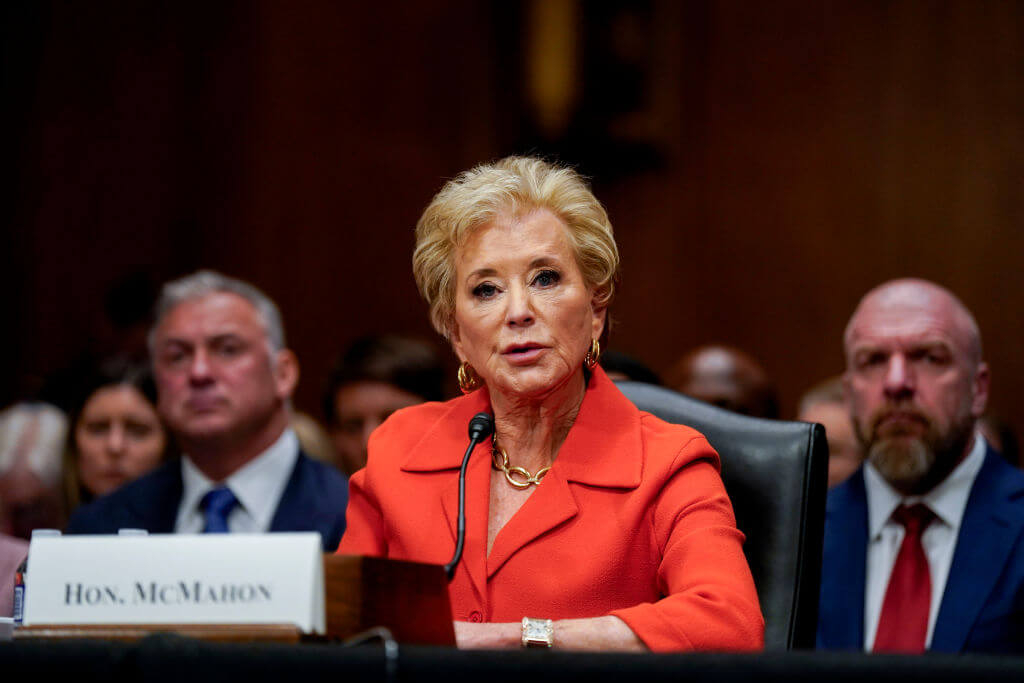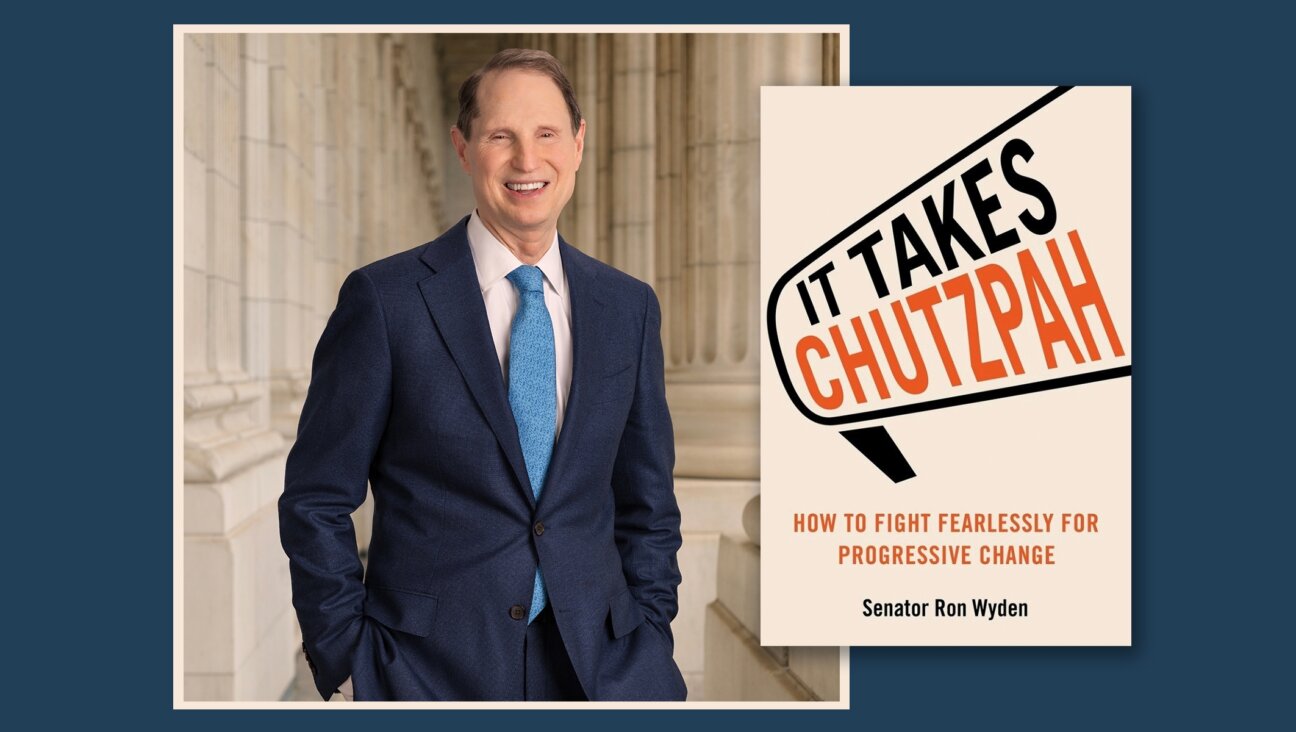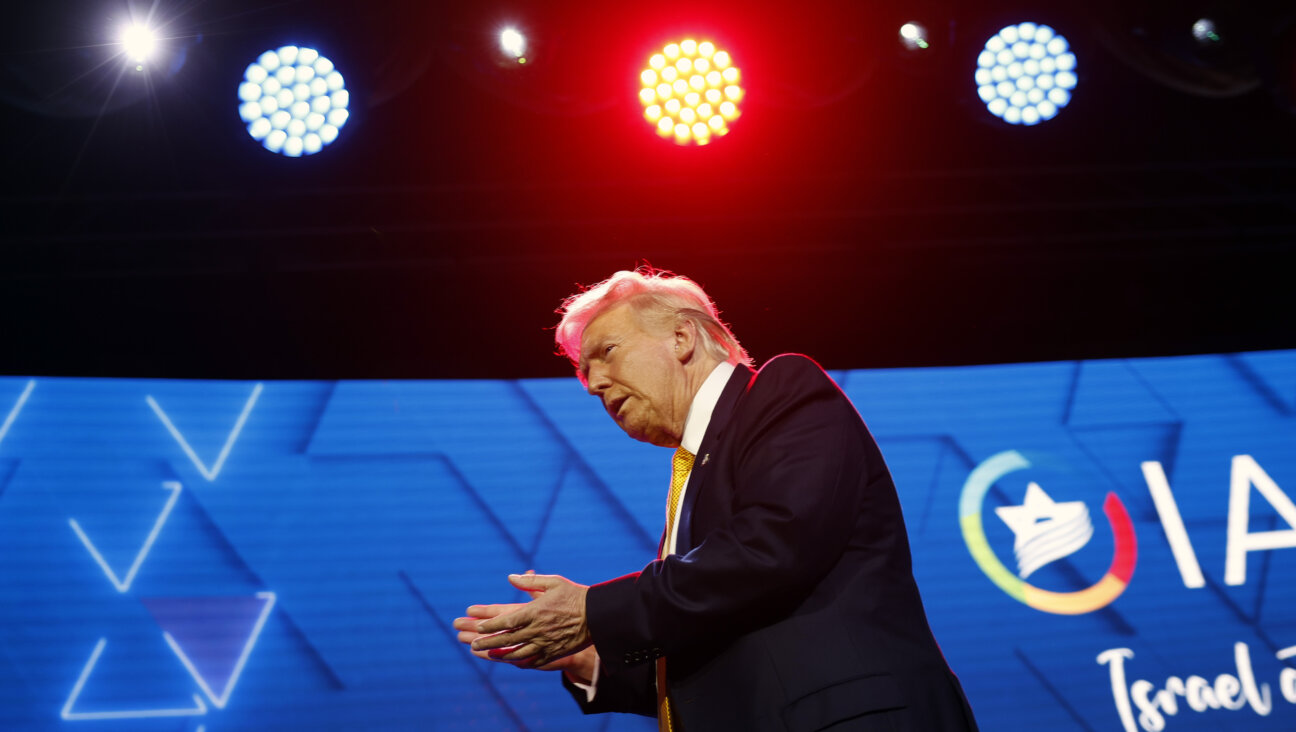Just who are the Rothschilds today? The long, non-laser-filled answer

Graphic by Angelie Zaslavsky

Jacob Rothschild Image by David M. Benett/Getty Images
One of them married Nicky Hilton, Paris’s sister. Another is an environmental activist in Santa Monica, California who crossed the Pacific Ocean in “Plastiki,” a craft made of recycled plastic bottles. Another tragically died just two weeks ago at age 57. They invest, run business interests, donate generously to a variety of causes, and not one of them has ever caused a forest fire with laser beams.
Today’s Rothschilds aren’t as rich as Bezos and Gates, but they still command the attention of antisemites and conspiracy mongers. Case in point: Just over two years ago, Republican Rep. Marjorie Taylor Greene of Georgia suggested in a Facebook post that wildfires in California started by PG&E, in conjunction with the Rothschilds, using a space laser, in order to clear room for a high-speed rail project.
The Rothschild family has featured heavily in antisemitic conspiracy theories since at least the 19th century. If you believed the Marjorie Taylor Greenes of the past, you’d think the family caused both Communism and capitalism, World War I and II, 9/11, the recent Malaysian Air disaster and — oh, they sank the Titanic.

Marjorie Taylor Greene, a Republican House candidate in Georgia who supports QAnon Image by (Facebook)
Wild sci-fi theories aside, just who is the Rothschild family today? This storied family continues to be enormously rich, fairly Jewish, and an enduring poster child for conspiracy-minded antisemites.
Throughout much of the 19th and 20th centuries, the Rothschilds were arguably the richest family in the world, perhaps richer in today’s dollars than Jeff Bezos and Bill Gates combined. They helped finance everything from the DeBeers diamond mines to the French railroads and the New York City subways as well as Club Med. These offspring of a Frankfurt money lender became royalty – literally: they were made Barons and Lords by two kings. And when the British government said it would support establishing a “national home for the Jewish people,” it is often forgotten that the much-celebrated Balfour Declaration came in the form of a letter to Lord Walter Rothschild.
The family has survived, though not without tension and sorrow. A few years ago the Swiss branch of the storied family sued the Anglo-French branch over the use of the family name. And, tragically, on Jan. 16, 2021, scion Benjamin de Rothschild, died of a heart attack at his home in Switzerland. He was 57.
The (real) Rothschild origin story
The basic outline of the Rothschild story, retold in several best-selling books, a 1934 movie, and a hit Broadway musical, are pretty well known: Mayer Amschel Rothschild, born in 1744, was a dealer in coins and a money lender in the Frankfurt ghetto, whose house was near a red shield – hence roth schild. At the beginning of the 19th century, he dispatched his five sons to set up banks in Frankfurt, London, Paris, Vienna, and Naples, creating a unique international network for marshaling and moving vast sums of money.

Mayer Amschel Rothschild Courtesy of wikimedia
The five houses worked together and prospered as they raised money for the industrialization of Europe, financing railroads, mining companies, and factories. They provided the cash for the British purchase of the Suez Canal and financed the Napoleonic and Austro-Prussian wars. The Rothschilds also were bankers to the Czars and raised the £2 million Brazil needed to pay for its liberation from Portugal.
The Rothschilds virtually invented the government bond, which became critical in financing the military and imperial aspirations of assorted crowned heads of Europe. Hence, the British novelist William Thackeray said of England’s Nathan Rothschild, he was “not king of the Jews but the Jew of the kings.” Nathan, said to be the richest man in the world in his day, would become the first Jewish member of the House of Lords. (Yes, Benjamin Disraeli got there first, but he had already converted to Christianity.)
They built fabulous houses and amassed the largest private art collection in the world. Waddesdon Manor, one of some four dozen mansions owned by the family, sat on 6,000 acres, and the Langau estate outside Vienna was nearly the size of Manhattan. They acquired leading vineyards and bred racehorses. The French Rothschilds built an industrial empire that included steel plants and railroads. And wherever they were, they were considered the titular heads of the local Jewish community.
As such, the Rothschilds were beacons, and frequent benefactors, for the downtrodden Jews of Eastern Europe. When Tevye the dairyman sings “If I Were a Rich Man” in Fiddler on the Roof, he is channeling a 1902 Sholem Aleichem Yiddish monologue: Venn ich bin a Rothschild — “If I were a Rothschild.”

Chaim Topol performs as Tevye in a 2005 Australian production of ?Fiddler on the Roof.? Image by Getty Images
As the 20th century began, the family empire began morphing. The Frankfurt house closed in 1901 for lack of a male heir (Mayer had decreed primogeniture). Naples closed in 1863 after Italy’s revolution decimated the bank’s aristocratic customer base (but Italian Rothschilds remained financial advisors to the popes for years). The Austrian bank, which was the Habsburg empire’s biggest financier, was taken over by the Nazis. The Austrian Rothschilds fled to the U.S. So did members of the English and French branches, although Baron Guy de Rothschild soon went to London to join the Free French forces of General Charles de Gaulle.
After World War Two, the two remaining banks, in London and Paris, each sought to pick up the pieces. It was tough sledding as the Arab League pursued its ban on those who did business with the Rothschild banks as part of the Arab boycott of Israel.
Nonetheless, In London, NM Rothschild prospered as a gold bullion dealer as well as a merchant bank advising major corporations and governments, most notably Margaret Thatcher’s landmark privatization program. In France, Baron Guy de Rothschild was rebuilding the bank which also owned a sizable industrial empire, but in 1981 Francois Mitterrand’s socialist government nationalized Banque Rothschild. Baron Guy once again left France for New York. As he wrote in Le Monde, “A Jew under Petain, a pariah under Mitterrand, for me it’s enough.” But his son David created a new company under the name Paris Orléans — an existing corporate shell had held some of family’s investments — and when Jacques Chirac became prime minister in 1986, the Banque Rothschild name was revived.
The (real) modern Rothschild family

The Baroness Philippine de Rothschild (C) her son Julien Sereys de Rothschild (L) and Jean-Pierre de Beaumarchais attend ‘La Fete de la Fleur’ at Chateau de Lascombes on June 23, 2011 in Margaux, France. ( Image by Julien Hekimian/Getty Images
Meanwhile, internal troubles were welling up. In Paris, the second son decamped for Switzerland, and in 1953, he would set up the Edmond de Rothschild Group, a private bank specializing in asset management. In London, after Jacob clashed with his cousin Evelyn, the chief executive officer of NM Rothschild, he resigned from the bank in 1980 and took control of Rothschild Investment Trust, an investment company (Later renamed RIT Capital Partners). Jacob would go on to become the richest Rothschild of modern times.
As the financial world became dominated by global behemoths, the London and Paris banks began working together to bulk up. Besides, London was running out of Rothschilds. Evelyn’s cousin, Amschel Rothschild, who had reluctantly joined the bank, hanged himself in 1996. Evelyn’s son David became an environmental activist and his other son, Anthony James de Rothschild, was a record producer. Cousin Jacob had gone elsewhere, as had his son Nathaniel. The British and French banks, which had long had cross-shareholdings, formally came together in 2003. Evelyn sold his shares to his French cousins in 2007 for a reported $233 million, and David René de Rothschild, Baron Guy’s son, became chief executive officer as the two banks were fully merged in 2012.
Some thought Nathaniel, Jacob’s only son would eventually succeed David, and, in Star Wars fashion, unify the empire. But Nat clashed with David in 2013. Nat had cofounded an Indonesian mining company called Bumi Plc but he got in a dispute with his partners, an influential Indonesian family. Bumi’s board called in a merchant bank to help sort out the issues. That bank was NM Rothschild, which was now advising Nat’s adversaries. So it was no surprise that when David announced his plans to retire from the bank in 2018, at age 75, his successor as chief executive officer would not be Nat but rather David’s 37-year-old son, Alexandre de Rothschild.

A Jeroboam of Mouton Rothschild Image by NICOLAS ASFOURI/AFP via Getty Images
However, the most public quarrel came between Edmond de Rothschild’s Geneva company and the Anglo-French bank. In April 2015, David proposed that the holding company for the London and Paris banks — Paris Orleans — be renamed Rothschild & Co. and the brand would be “Rothschild.” Ariane de Rothschild, the wife of Edmond’s son Benjamin and the newly named managing director of Edmond de Rothschild, sued, claiming that using the Rothschild name as a standalone brand without any initials or other indication that it was just one strand of the Rothschilds, wasn’t kosher. As she told the Financial Times in March 2016, simply using “Rothschild,” is “not allowed.” Some said that family members would never have sued blood relatives, but Ariane was a Rothschild by marriage (and the only woman to ever run a Rothschild business).
After several years of negotiations, a legal settlement was reached in 2018 in which the firms agreed that “Neither group may use the name Rothschild on its own in any form whatsoever in the future.” Thus, the Anglo-French bank, for example, stopped using the domain name www.rothschild.com and changed its website to www.rothschildandco.com. Moreover, Rothschild & Co. sold its 8.4% stake in Edmond de Rothschild and bought back the Geneva bank’s stake in Rothschild & Co. Thus, the two firms no longer had any financial incentive to work together and would go their separate ways.(In Mayer’s day, all five banks were deeply intertwined by cross investments as well as by blood.)
These days, while the Rothschild bank can’t match a JP Morgan Chase or a Citibank in making multi-billion-dollar loans, it regularly ranks among the world’s top dozen firms advising on important mergers and acquisitions deals.
That’s a business that relies on connections, and alumni of the Paris bank have included George Pompidou, who went on to become prime minister, and the current French president, Emanuel Macron, who spent four years as a deal maker at the bank and is considered a protégé of Baron David de Rothschild. In London, Evelyn has been an advisor to the Queen while Jacob counseled Princess Diana. The Edmond de Rothschild Group also has an advisory business but mainly it manages some $200 billion for ultra-high net worth families, including a number of very rich Jews in Switzerland and beyond.
Jacob’s son Nat, meanwhile, has been building a new branch of the family, and he is widely expected to become the richest Rothschild. Rather than work for his father at RIT Capital Partners, Nat had a hedge fund, Atticus, for a number of years, and these days he’s been involved in a series of natural resource deals, often with Russian oligarchs.

Jacob Rothschild Image by David M. Benett/Getty Images
Nat and his father Jacob are both thought to be billionaires, but because the family fortune is divided among many cousins, few Rothschilds show up on the various rich lists. There are continuing hints of fabulous wealth: In 1988, for example, Dorothy Rothschild UK estate was the largest estate ever probated in British history. And in 2015 Eric de Rothschild in France sold two Rembrandts for $180 million. But many of the cousins have their wealth tied up as shareholders in various opaque Swiss and Dutch holding companies, including Rothschilds Continuation Holdings AG and Concordia BV.
Surprisingly, the Rothschilds have never gotten a big foothold in the U.S. The French and English banks jointly set up shop in the U.S. in the 1960s as the Five Arrows Group and also created New Court Securities as a broker and asset manager. (There are five arrows on the Rothschilds coat of arms and New Court is the street address of the British bank.) All this became Rothschild & Co., in 1982 and for a time it was headed by Wilbur Ross, who would serve as President Trump’s Secretary of Commerce.
Young Rothschilds: From Santa Monica to Central Synagogue
In 2017, Rothschild Inc. opened a San Francisco office to ramp up its Silicon Valley business. But Rothschild & Co. has never gotten beyond boutique status in the U.S. Baron Edmond, meanwhile, bought Bank of California in 1976, a medium-sized commercial bank, but he sold it to the Japanese in 1984.

The three children of the late Baroness de Rothschild, Philippe Sereys de Rothschild (2nd R), Camille Sereys de Rothschild (2nd L), their half-brother, Julien de Beaumarchais de Rothschild (3rd L), Camille’s daughter, Charlotte-Marie Ogren de Rothschild (L) and the Baroness’ widower, father of Julien, Jean-Pierre de Beaumarchais (R) pose as they arrive on July 6, 2016 at the Chateau Clerc Milon in Pauillac to attend the Philippine de Rothschild’s Foundation Clerc Milon Danse award ceremony. Image by MEHDI FEDOUACH/AFP via Getty Images
Despite limited business involvement in the U.S. there have always been assorted Rothschilds living here. In addition to those in New York during World War Two, Baron Guy returned after Mitterrand nationalized his bank. A Rothschild Baroness had a 14-room apartment at 820 Fifth Avenue. And Nat had a pied-à-terre, in the West Village, that he sold for a reported $17.5 million in 2015. These days, David Mayer de Rothschild, Evelyn’s son, spends much of his time in Santa Monica.
Evelyn and his third wife Lynn Forester, have homes in Manhattan and Martha’s Vineyard. Forester is an American who was introduced to Lord Rothschild by Henry Kissinger at an elite 1998 conference in Scotland. When they got married in 2000, their friends the Clintons invited them to spend part of their honeymoon at the White House. Lady Rothschild, an entrepreneur in her own right with two grown sons in the U.S. from a previous marriage, travels frequently between the U.S. and UK. His lordship was at her side a couple of decades ago when her son had his bar mitzvah at Central Synagogue, a tony Reform temple in Manhattan. (Guests figured the kiddush luncheon was going to be pretty spiffy, but, alas, all they got was tea and babka while a convoy of limousines ferried the Rothschilds and their guests somewhere else.)

Lynn Forester de Rothschild
Originally, like royalty, Rothschilds tended to marry their cousins. But in more modern times, they have branched out. Rothschild spouses from prominent Jewish families include Moses Montefiore, as well as a Sassoon, a Guggenheim, and a Warburg, and there are also links to the DuPonts and the Hiltons – In 2015 James Rothschild married Nicky Hilton, great-granddaughter of hotelier Conrad Hilton and sister of Paris Hilton.
Meanwhile, Alice Rothschild, whose mother was a member of the Guinness brewing family, married Zac Goldsmith, a baron and a former conservative MP who ran for mayor of London in 2016, while her sister Kate married Ben Goldsmith. Kate and Ben divorced in 2013 after 10 years of marriage. The Goldsmith boys are scions of another super-rich British family. Their Jewish father, Sir James Goldsmith, was known not only for his wealth but for being a bit of a bigamist, with acknowledged families in England and France.

Independent candidate Zac Goldsmith and his wife Alice Rothschild leave after casting their votes in the Richmond Park by-election on December 1, 2016 in London, England. Image by Carl Court/Getty Images
The (real) Rothschild hidden power? Philanthropy
For two centuries, the Rothschilds have not only been known for their banking prowess and lavish estates but also for their commitments to the arts and intellectual life.
Bathsheva de Rothschild, born in Paris in 1914, later moved to the U.S. where she married and divorced a Bloomingdale before settling in Israel and founding the Bat-Dor Dance Company.

Members of Israel’s Bat-Dor Dance Company perform at the Joyce Theatre New York, New York, 1983 Image by Robert R. McElroy/Getty Images
Victor Rothschild was a biologist and botanist who worked for MI5 – that’s the UK’s CIA — during World War Two. Miriam Rothschild was also a distinguished scientist. Hannah, Jacob’s daughter, published a well-regarded novel, “The Impossibility of Love” in 2015. She has kept her day job as a non-executive director at RIT, but she is also a filmmaker and chair of the National Gallery. Emma Rothschild, who married Amartya Sen, an Indian who won the Nobel Prize in economics, has been a professor of history at Harvard.
There’s been more than a little marrying out and assimilation, but a number of Rothschilds have remained prominent in Jewish affairs. As far back as the 1870s, Rothschilds were buying land from Ottoman landlords and establishing settlements and business ventures in what was then Palestine. For many years, Baron Guy headed the French Jewish community, but resigned when he married his second wife, a Catholic. His son from his first marriage, David René, has been president of the World Jewish Congress and the Foundation pour la Mémoire de la Shoah.

Knesset building Image by wikimedia
British Rothschilds paid for the buildings in Israel housing the Knesset, the Supreme Court, and the national library and also financed Israeli public television. These days, Jacob Rothschild’s Yad Hanadiv foundation continues to be very active in Israel (and in supporting Jewish schools in Europe). In Switzerland, Edmond de Rothschild was a fervent supporter of Israel and Jewish causes, as was his late child Benjamin de Rothschild.
In April of 2020, for example, the Edmond de Rothschild Foundation donated 15 million New Israeli Shekels to the Hebrew University of Jerusalem for research on the coronavirus. (The family vineyards have also made and sold kosher wine in addition to its Grand Cru.)
Now for the conspiracy theories
Meanwhile, the Rothschilds have retained their unique status as the absolute best, all-purpose poster boys for those drawn to conspiracy theories, particularly of the antisemitic variety.
In the 19th century, Nathan Rothschild was said to be present at the battle of Waterloo, and when he saw that the British had won, he was rushed back to London by speedy boat and deviously began buying up deeply depressed securities. When the news of the British victory arrived a day later, of course, prices shot up, and he made a killing. He did, in fact, profit, but not by dint of any inside information. As The Independent reported following an investigation into the 200-year-old libel, he wasn’t at the battle.

Image by wikimedia
Nearly a century later, the news that a Rothschild insurance company had refused to ensure the Titanic gave rise to long-disproven theories that they were behind its sinking. This convoluted theory suggests the Rothschilds wanted to get rid of several prominent (and Jewish) Titanic passengers who were vocal opponents of the supposed Rothschild’s plan to take control of the Federal Reserve system.
Descend into the antisemites’ fever swamps, and you’ll learn that the Rothschilds also financed both the Bolshevik Revolution and Nazism. They somehow engineered World War II and the Holocaust in order to generate the sympathy necessary to establish the state of Israel. Hitler was actually related to the Rothschilds. And did you know that the House of Saud are descendants of “Arabian Jews” who are aligned with the Rothschilds? Needless to say, the Rothschilds have been blamed for 9/11, the Malaysian Air flight that went missing, and assorted other calamities. The amounts of money they are supposed to control — it’s said to be in the trillions — exceeds most serious economists’ estimates of the amount of wealth that exists in the world.
The point of all their alleged machinations is either to make themselves even richer or to create the “New World Order” which would abolish nationalities and enslave humanity. They were said to be in a conspiracy with the Illuminati, the Trilateral Commission, the Council on Foreign Relations, and the Rockefellers. Of course, the Rothschilds also control our thoughts through ownership of the media, according to conspiracists. In fact, Evelyn de Rothschild has only owned 21% of The Economist and has been chairman of its board, and in 2005, Edouard de Rothschild improbably invested $28 million to acquire 37% of Libération, a financially troubled very left-wing French newspaper.
Rothschilds with lasers!
American antisemites were quick to jump on the Rothschild bandwagon years ago. And this summer the Republican National Convention abruptly canceled a speech on illegal immigration by Mary Ann Mendoza after she was found to have retweeted posts indicating that the Rothschilds were involved in a plot to terrorize non-Jews in order to “make the goyim destroy each other.” In 2018, moreover, she had tweeted that “The Rothschilds have been using their globalists media mouthpiece to declare that Donald Trump is threatening to destroy the New World Order.”
Meanwhile, Desean Jackson, a former NBA player, retweeted news that Jews were trying to divide the Black community. And in the course of apologizing for his antisemitic posts to Don Lemon on CNN, he said, “You know who the Rothschilds are? They control all the banks. They own all the banks.”

DeSean Jackson Image by Getty
The Rothschilds’ status as the best all-purpose villains for antisemites has been challenged in recent years by George Soros. Everything that they were supposedly up to is now also attributed to Soros, a Hungarian Jew who fled the Nazis and became a billionaire hedge fund manager in the U.S.
But just as Soros looked to be taking the top spot, Rep. Greene put the Rothschilds back into the fever dreams of antisemites with a 21st-century twist: Rothschilds with lasers!
Some 200 years after Mayer Rothschild dispatched his sons to Europe’s capitals, the Rothschilds still compare well with other dynasties. They’re doing better than the house of Windsor, to whom they have been advisors. They’ve remained prominent longer than the Rockefellers, whose fourth and fifth generations have largely been invisible. As for the Lehmans, they’ve gone from important financiers to political leaders (remember Governor Herbert Lehman), to the name on a failed investment bank that arguably set off the Great Recession.
And then there are the Kennedys: Each successive generation still offers up bold-face names but some are charismatic politicians while others are anti-vaxxers or reckless daredevils.
Successive generation of Rothschilds, meanwhile, keep producing sharp penciled investors as well as aesthetes and intellectuals. No one has spoiled the Rothschild name. Though generations of antisemites keep trying.
Harvey D. Shapiro has written for The New York Times Magazine, New York Magazine, NewYorker.com, and was senior contributing editor for Institutional Investor.





















